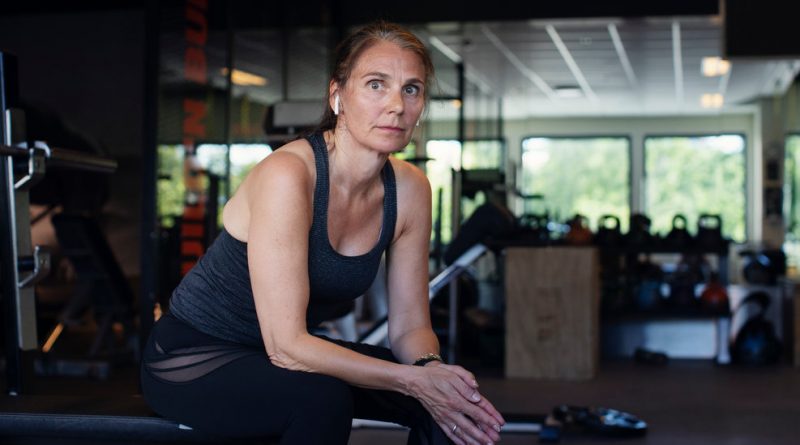In Norway, Gymgoers Avoid Infections as Virus Recedes
[ad_1]
Like many countries, Norway ordered all gyms to close in March to prevent the spread of the coronavirus. But unlike any other nation, Norway also funded a rigorous study to determine whether the closings were really necessary.
It is apparently the first and only randomized trial to test whether people who work out at gyms with modest restrictions are at greater risk of infection from the coronavirus than those who do not. The tentative answer after two weeks: no.
So this week, responding to the study it funded, Norway reopened all of its gyms, with the same safeguards in place that were used in the study.
Is there hope for gymgoers in other parts of the world?
“I personally think this is generalizable, with one caveat,” said Dr. Michael Bretthauer, a cancer screening expert at the University of Oslo who led the study with Dr. Mette Kalager. “There may be places where there is a lot of Covid, or where people are less inclined to follow restrictions.”
Norway is bringing its epidemic under control, and the number of new infections has fallen. But the incidence of the infection in Oslo, where the study was conducted, resembles that in such cities as Boston, Oklahoma City and Trenton, N.J.
The trial, begun on May 22, included five gyms in Oslo with 3,764 members, ages 18 to 64, who did not have underlying medical conditions. Half of the members — 1,896 people — were invited to go back to their gyms and work out.
They were required to wash their hands and to maintain social distancing: three feet apart for floor exercises, and six feet apart in high-intensity classes. The subjects could use the lockers, but not the saunas or the showers. They were not asked to wear masks.
Another 1,868 gym members served as a comparison group; they were not permitted to return to their gyms.
During the two weeks of the study, 79.5 percent of the members invited to use their gyms went at least once, while 38.4 percent went more than six times. Some were overjoyed to restart their routines.
Goril Bjerkan, a 53-year-old economist who lives in Baerum, just outside Oslo, went to the gym three to four times a week during the study, using the treadmill, taking classes and doing strength training.
“It was fantastic to get back to the gym again after almost 11 weeks of closure,” she said. “I suspect it was more risky to visit the shopping center than to visit the gym.”
Heide Tjom, a 57-year-old architect who bicycles into Oslo, leapt at the opportunity to return to the gym four times a week, where she works with a personal trainer and takes group cardio classes.
“Keeping fit is very important to me,” Ms. Tjom said. “I feel it is important to my existence.”
Over the study period, there were 207 new coronavirus cases in Oslo. Study participants and gym staff members were tested for the infection on June 8. (Antibody tests of participants are now being conducted.)
Dr. Bretthauer and Dr. Kalager also examined Norway’s extensive electronic health records database for outpatient visits and hospitalizations among the participants.
The results? The researchers found only one coronavirus case, in a person who had not used the gym before he was tested; it was traced to his workplace. Some participants visited hospitals, but for diseases other than Covid-19, the illness caused by the coronavirus.
There was no difference in hospital visits between the groups, and there were no outpatient visits or hospitalizations because of the coronavirus. The findings were posted online on Thursday, but had not been peer-reviewed nor published.
Some experts felt the results demonstrated that returning to the gym was relatively safe — but only in places where there were few infections.
“This shows us that low-prevalence environments are safe for gyms and probably just about everything else,” said Dr. Gordon Guyatt, a professor of medicine at McMaster University in Canada. “It is very unlikely you will get infected.”
“If you were in a different environment where there is a substantially higher prevalence, we don’t know what will happen,” he added.
But Jon Zelner, an epidemiologist at the University of Michigan, did not find the study to be fully convincing: “These findings don’t tell me that going to the gym isn’t riskier than not going to the gym, even in Oslo,” he said.
A larger study is needed in places with a relatively low prevalence to determine whether the virus is more easily transmitted in gyms, Dr. Zelner added. Alternatively, a study with fewer people, but in a community with a high prevalence of infection, could answer the question.
Such a study may raise ethical concerns, since it may not be safe to send people to gyms in high-prevalence communities — “kind of a Catch-22,” Dr. Zelner said.
Still, how low does risk have to be before it is acceptable to reopen gyms and fitness centers?
Dr. Guyatt said the risks of infection in a community where the prevalence is low are outweighed by the advantages to society.
“You can’t stay locked down forever,” he said. “We are never going to be completely free of this thing. And in a low-prevalence environment, the risk is low wherever you go — gyms or grocery stores or even restaurants.”
Now, Dr. Bretthauer and Dr. Kalager want to see whether the social-distancing measures they used in the study were necessary.
They hope to randomly assign 150 gyms to operate without restrictions or to maintain those in place now, then compare infection rates among gymgoers. The study is only in its planning stages.
